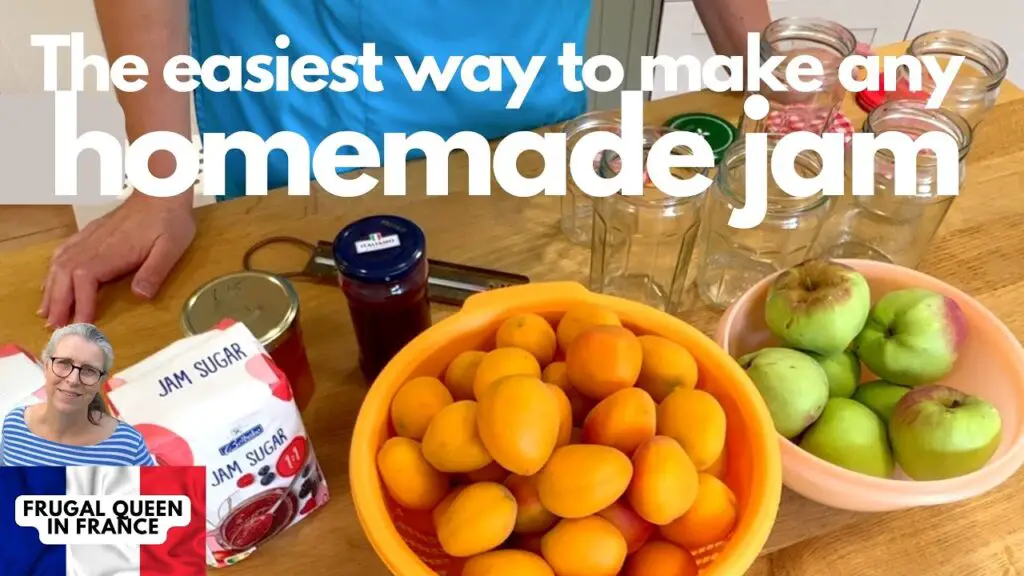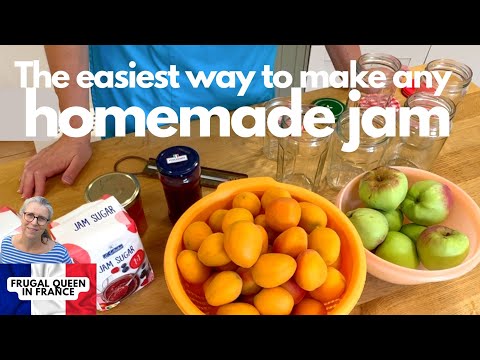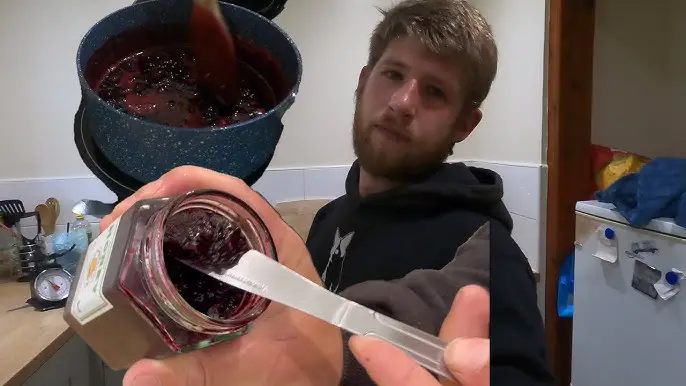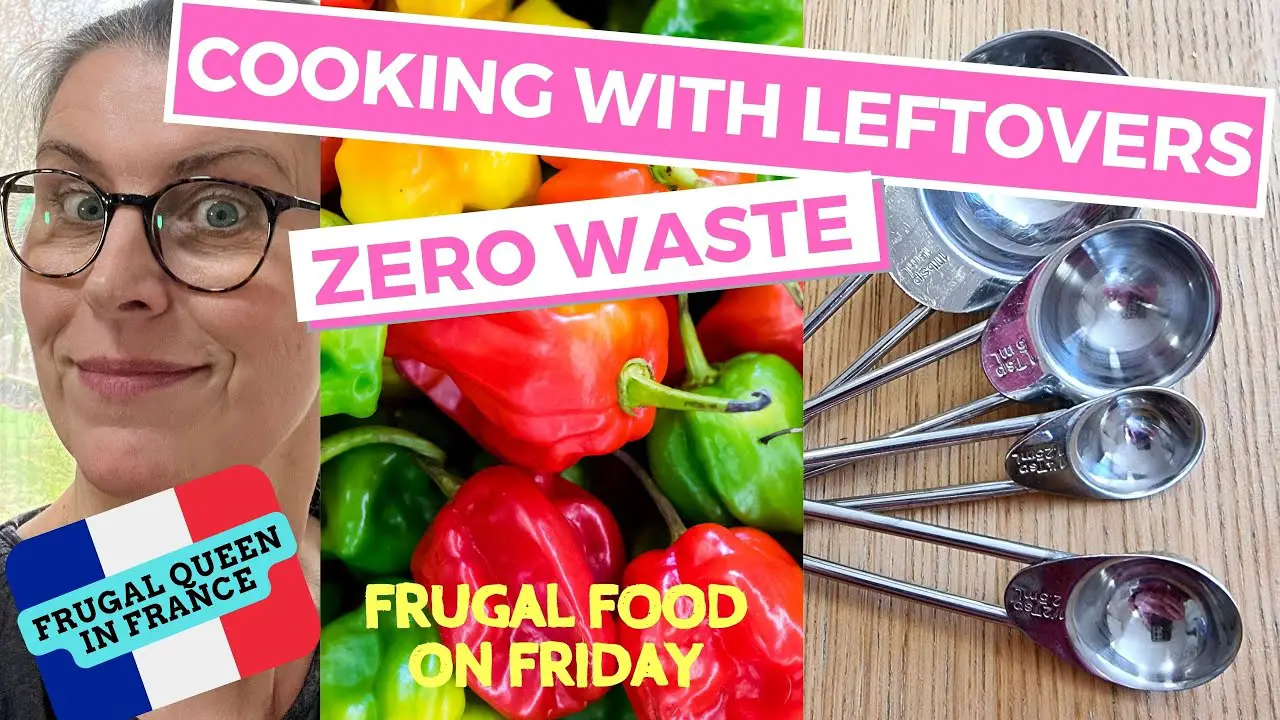In this article, you will learn how to make homemade jam using apricots and apples. The video is created by Frugal Queen in France, featuring Jane and her husband Mike, who share their experience of making jam on a budget. They highlight the simplicity and economy of making homemade jam compared to buying store-bought options. They provide step-by-step instructions on the method, including tips on testing the jam’s setting point and sterilizing jars. The article also mentions the importance of using quality ingredients and showcases the sealed jars of apricot jam. Join them in their jam-making journey and discover the joy of creating your own delicious preserves.
In the video, Jane and Mike introduce themselves as British retirees living on a tight budget in Brittany, Northwest France. They emphasize the affordability and superior fruit flavor of homemade jam compared to artisanal jams available in stores. Using affordable apricots and free apples, they demonstrate their quick and simple method of making apricot jam. They guide you through the preparation process, including peeling, coring, and chopping the fruits. They also highlight the significance of using jam sugar with pectin and locally sourced fruit. Stay tuned as they share their expertise and passion for homemade jam, proving that anyone can enjoy the satisfaction of creating their own delicious preserves.

Homemade Jam: An Easy and Frugal Option
Introduction to Homemade Jam
If you’re a fan of fruity and sweet spreads, then homemade jam is the perfect treat for you. Making your own jam not only allows you to customize the flavors to your liking, but it’s also a frugal and economical option. In this comprehensive article, we will delve into the benefits of making homemade jam, the process of creating delicious apricot jam, and why homemade jam is superior to store-bought alternatives.
Benefits of Making Homemade Jam
Making homemade jam has numerous benefits that go beyond just the joy of indulging in your own creation. Firstly, homemade jam allows you to control the ingredients and choose high-quality fruit. You can ensure that your jam is made with fresh, locally sourced fruit, resulting in a superior flavor compared to store-bought options. Additionally, you have the freedom to experiment with different flavors and add-ins to create unique combinations that suit your taste preferences.
Frugality and Home Preserves
One of the most appealing aspects of making homemade jam is its frugality. Artisanal jams in the market can come with a hefty price tag, but by making your own, you can save a significant amount of money. This is especially true if you have access to cheap or free fruits like apricots and apples. Homemade jam not only offers you a cost-effective alternative, but it also allows you to enjoy the process of creating something delicious on a budget.
Meet the Creators: The Frugal Queen in France
In the realm of frugal living and homemade creations, the Frugal Queen in France takes center stage. This British couple, Jane and Mike, are early retirees living in Brittany, France on a tight budget. They specialize in sharing frugal recipes, home renovations, and day-to-day life in France. In one of their popular videos, they showcase their method for making homemade jam using apricots and apples. Their friendly and informative approach makes the process easy to follow for viewers looking to embark on their own jam-making journey.
The Equipment Used in the Video
To create their video on making homemade jam, Jane and Mike utilize a simple setup. They rely on an iPhone camera to capture the process and edit the footage using iMovie on a Mac mini. The music for their video is sourced from Zapsplat.com YouTube Audio Library and Apple iMovie, adding a delightful soundtrack to their jam-making adventure. With just these basic tools, they are able to share their knowledge and passion for frugal living with the world.
The Recipe: Apricot Jam
Ingredients
To make apricot jam, you will need the following ingredients:
- 2kg of apricots
- 2kg of sugar (preserving sugar or ordinary sugar)
- Juice of 1 lemon
Method
- Begin by washing the apricots and cutting them in half, removing the stones.
- Chop the apricots into smaller pieces.
- Peel and core the apples, then chop them up.
- Place the fruit in a large pot and cook over medium heat until it softens.
- Add the sugar to the pot and stir until it dissolves completely.
- Bring the mixture to a boil, continuing to stir for 10 minutes.
- Test for setting by placing a small amount of jam on a cold plate. If it sets and doesn’t run, it’s ready. If not, continue boiling for another 5 minutes and test again.
- If needed, you can adjust the setting by adding more lemon juice or sugar.
- Once the jam reaches the desired consistency, remove it from heat and let it cool for a few minutes.
Testing for Setting
Testing for the setting point is an important step in making jam. To do this, simply place a small amount of the jam on a cold plate. Allow it to cool for a moment, then push your finger through the jam. If it wrinkles and doesn’t run, it has reached the desired setting point. If it is still runny, continue boiling the mixture and test again after a few minutes.

Tips and Techniques
Using Quality Ingredients
To ensure the best flavor and texture in your homemade jam, it’s important to use high-quality ingredients. Opt for locally sourced, ripe fruit whenever possible. The sweetness and freshness of the fruit will greatly enhance the final result.
Sterilizing Jars and Lids
Properly sterilizing your jam jars and lids is crucial for preventing spoilage and extending the shelf life of your homemade jam. You can sterilize the jars by washing them thoroughly with hot soapy water, then rinsing them clean. Place the jars in the oven at 100 degrees Celsius until they are hot to the touch. Boil the lids separately for about 10 minutes to ensure they are sterile before use.
Handling Hot Ingredients
When working with hot ingredients while making jam, it’s important to take precautions to avoid burns. Use tongs, oven gloves, or a tea towel to handle hot jars and lids safely. Be mindful of the heat and protect your hands and fingers to prevent injury.
Sealing the Jars
Achieving a proper seal is crucial for preserving your homemade jam. Ensure that the jars and lids are hot when filling them with the hot jam. As the jam cools, the lids will create a vacuum seal, preventing air from entering and bacteria from growing. Check for a clicking sound or use the “finger test” to make sure the lids are sealed properly.

Why Homemade Jam Is Superior
Higher Fruit Flavor
Store-bought jams often contain added water and artificial flavors, leading to a diluted taste. Homemade jam, on the other hand, is bursting with the natural flavor of the fruit used. By using fresh, ripe fruit and minimal additional ingredients, you can enjoy a jam that truly highlights the essence of the fruit.
No Added Water or Gelling Agents
Another advantage of homemade jam is the absence of added water or gelling agents. Many commercial jams use these additives to create thicker textures and stretch the fruit content. However, this can compromise the natural taste of the jam. With homemade jam, you have complete control over the ingredients, allowing you to create a product that is pure and unadulterated.
Preserving the Fruit’s Natural Taste
Preserving the natural taste of the fruit is a key aspect of homemade jam. By using a simple cooking method and minimal ingredients, you can ensure that the fruit’s true flavor shines through. The low cooking times and minimal processing help retain the natural sweetness and texture of the fresh fruit, resulting in a truly delightful homemade jam.

Conclusion
Creating homemade jam is a rewarding and frugal endeavor that allows you to indulge in a delicious treat while saving money. By following the simple recipe for apricot jam and implementing the tips and techniques provided, you too can create a superior homemade jam that surpasses store-bought alternatives. Sealing and preserving the jam is crucial for long-term storage and maintaining its freshness. We encourage you to share your own jam-making experiences and continue exploring the world of homemade preserves.
*Please note: The content of this article is based on the video by Frugal Queen in France. The outlined recipe, tips, and techniques align with their demonstrated process.


